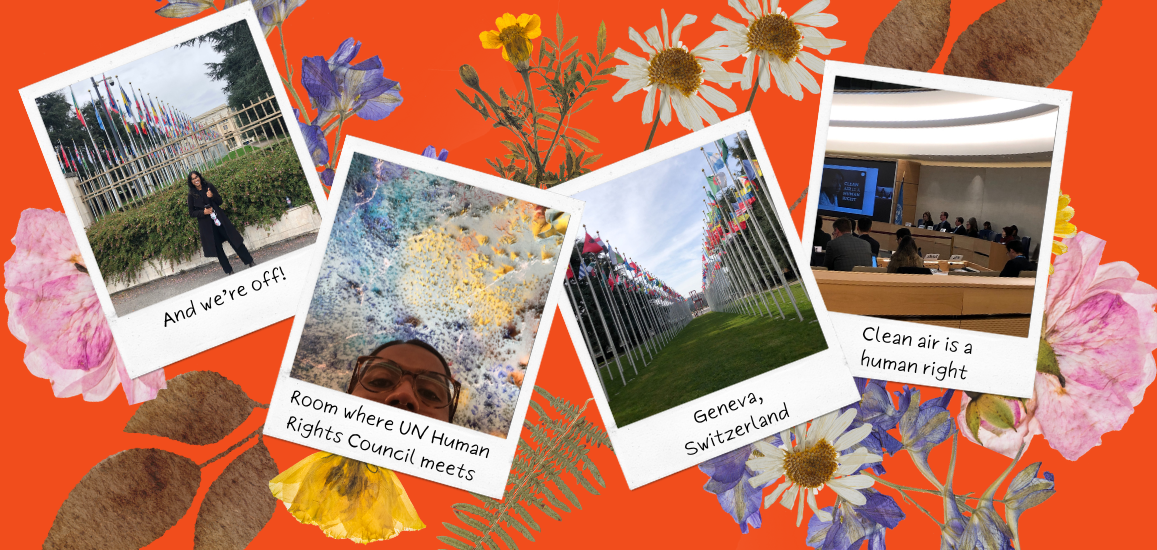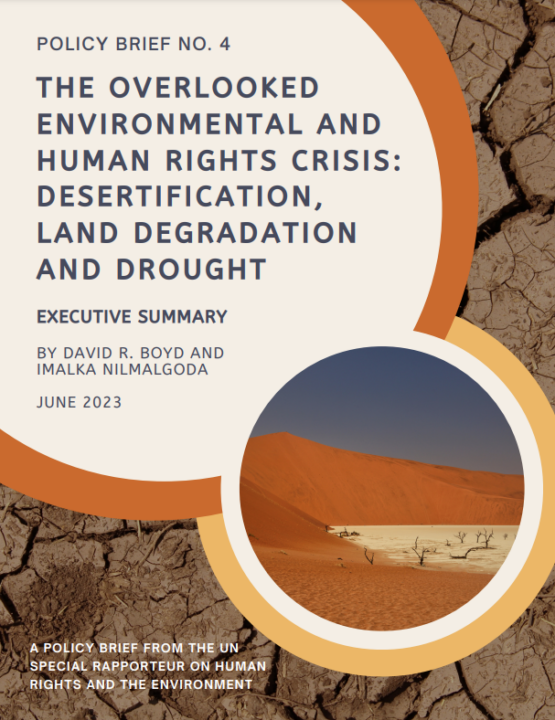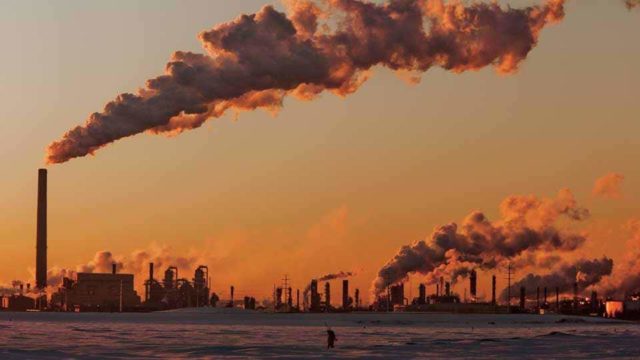For 2022–2023 I had the unique opportunity to work with Dr. David Boyd. David is Special Rapporteur on Human Rights and the Environment. [1]
I received this opportunity through a secondment arrangement with Ecojustice. Basically, Ecojustice paid my salary, but I worked solely for David.
Special Rapporteurs are independent experts appointed by the United Nations Human Rights Council. Their job is to follow and report on human rights-related issues. David’s particular mandate is to study, promote, and report on the human rights obligations relating to the enjoyment of a safe, clean, healthy and sustainable environment.
In other words, his role as Special Rapporteur is to help ensure that the right to a healthy environment is recognized and protected around the world. His work has been instrumental in the international recognition of the right to a healthy environment. He helped secure recognition at both the United Nations Human Rights Council in 2021 [2] and the United Nations General Assembly in 2022. [3]

What is the right to a healthy environment?
At first glance, human rights and environmental rights might seem like apples and oranges — unrelated to each other except for the fact that they’re both fruit. But when you think about it, the two go hand in hand. Clean air and water, a stable climate, and a thriving ecosystem are essential for the full enjoyment of human rights.
In turn, environmental laws, and policies must be built on respect for human rights. Human rights activists have been on the frontlines of systemic change for decades. This is the kind of change that’s desperately needed in environmental issues today.
Enter the right to a healthy environment — a human right that explicitly names this connection, and demonstrates that a safe environment is essential to a fulfilling life. It links the protection of human health and wellbeing to the protection of the environment and ecological systems.
The right is made up of both substantive and procedural elements. The substantive promises of the right include:
- clean air;
- a safe climate;
- healthy ecosystems and biodiversity;
- safe and sufficient water;
- healthy and sustainable food;
- and a non-toxic environment.
The procedural elements, which you can think of as a toolkit to help realize those substantive promises, include access to information, participation in environmental decision-making, and access to justice with effective remedies.
The right to life, water, food, and sanitation all depend on a healthy and sustainable environment. The right to a healthy environment is required to ensure the fulfilment of other human rights.
This right is more important now than ever.
We are collectively facing a triple planetary crisis. [4] Human-caused climate change, biodiversity loss and air pollution are pushing our planet past its limits and threatening our future. Recognizing and implementing the right to a healthy environment is a crucial step to combatting these crises.
Both governments and corporations have a responsibility to uphold the right to a healthy environment.
This right can hold those with power to account. Both governments and corporations have a responsibility to uphold the right to a healthy environment. In countries where this right is recognized, it has been used to benefit everyone. It has been used to achieve more rapid access to safe drinking water, faster reductions in carbon pollution, and safer air quality.
My work with David Boyd
I supported David in his work as Special Rapporteur by assisting him with research and reporting on environmental issues. This included reports to the United Nations Human Rights Council and United Nations General Assembly. I co-authored a report, with David, about desertification and human rights. [5] Not only that, but I put my amateur design skills to the test and came up with the cover page for the report. (Not a big deal at all, but if you wanted to print it out and frame it for your wall, I understand the urge and would give you full permission.)
Special Rapporteurs are also able to make third-party submissions to international, regional, and domestic courts all over the world. This is through a mechanism called amicus curiae (which translates to “friend of the court”) briefings. Supporting some of that work allowed me to see how different international and domestic legal systems operate. I even got to tag along with him to the 52nd meeting of the United Nations Human Rights Council in Geneva, Switzerland!
The experience gave me amazing insight into how international law, human rights, and environmental protection all come together in the right to a healthy environment. I learnt how the right has immense power to catalyze transformative change.
What is Canada’s role in all of this?
Canada recently recognized the right to a healthy environment for the first time in federal law. Bill S-5, which reformed the Canadian Environmental Protection Act (CEPA), legislated this right. Ecojustice played an important role in advocating for the passage of Bill S-5. More than 30,000 Ecojustice supporters helped achieve this victory too. They contacted elected officials to help win this legal right.
Now law, the modernized CEPA includes a requirement for the Government of Canada to come up with a plan to implement the right to a healthy environment under the Act. Right now, the Government is seeking submissions on an implementation framework. These submissions will help inform how the right will guide decision-making under CEPA.
Ecojustice is preparing to participate in those consultations. We are working with a coalition of organizations to push for an implementation framework that will ensure that the right to a healthy environment is a driving force in decision-making under CEPA.
I’m bringing my international experience to help shape our submission.
Other countries have a broad recognition of the right to a healthy environment. Canada must do the same.
Implementing this right should not solely focus on human health. It must take an ecosystems approach and understand the importance of upholding the principles of environmental justice, intergenerational equity and non-regression.
Canada must also ensure that the framework enables full transparency of how the right is considered in decisions made under CEPA.
We have a crucial opportunity to help shape how this important right will unfold in the Canadian context. The right to a healthy environment can and must be used to lead to deep, meaningful change.
Achieving the right to a healthy environment in law was the first step. Now we need to see proper implementation of this right for the benefit of people across Canada.

References
[1] David R. Boyd — Special Rapporteur on human rights and the environment
[2] A/HRC/RES/48/13 — Resolution adopted by Human Rights Council on 8 October 2021
[3] A/RES/76/300 — Resolution adopted by the General Assembly on 28 July 2022
[4] What is the Triple Planetary Crisis? — United Nations
[5] The Overlooked Environmental and Human Rights Crisis: Desertification, Land Degredation, and Drought — Office of the United Nations High Commissioner for Human Rights




